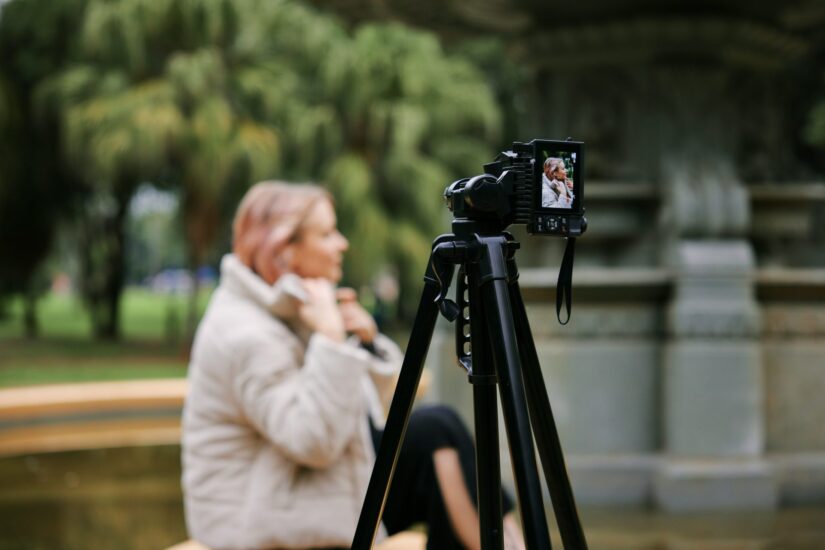So, imagine this: someone’s setting up for a big shoot. The lighting is perfect, the location is amazing, and the camera gear is all ready to go. Then—bam!—a dog runs through, knocks over the tripod, and the brand-new lens smashes to the ground. That one second just cost hundreds, maybe even thousands. Now what?
A lot of people don’t realize how expensive photography can get until something actually breaks, gets stolen, or goes missing. Cameras, lenses, tripods, lighting equipment—it all adds up. And when something happens, it hits hard. That’s where insurance steps in. It’s not just for clumsy people or big-time pros. Even someone just starting out can totally benefit from it.
Why Camera Gear Isn’t Just “Gear”
Camera gear is expensive. Even a decent beginner DSLR can cost a few hundred pounds, and that’s before adding a second lens, memory cards, or a good bag. Add in lighting equipment, backdrops, or a drone, and it quickly becomes a serious investment.
Now think about what happens if someone accidentally drops a lens, spills coffee on their camera bag, or gets robbed after a street shoot. That’s not just a bad day—it’s a disaster. For some people, that gear is how they make money or build a career. Losing it means losing jobs, clients, or even school projects if they’re in media or art classes.
This is why it’s smart to check out photography insurance early on. It covers things that normal home insurance usually won’t, like accidental damage while working or stolen equipment outside the house. It gives peace of mind so the focus can stay on shooting, not stressing.
Real Things That Go Wrong (And How Insurance Helps)
People often think, “That won’t happen to me.” But accidents don’t ask for permission. Here are some things that happen more often than most people realize:
- Theft from cars – Someone leaves a camera bag in the back seat while grabbing food. When they return, the window’s broken and everything’s gone.
- Trips and falls – A photographer backs up to get the perfect angle and falls, smashing their lens—or worse, getting hurt themselves.
- Venue issues – A wedding shoot at a fancy place gets cut short because of a power outage or weather. The clients want a refund or blame the photographer.
- Water damage – It starts raining out of nowhere. Even a waterproof bag can’t stop every drop, especially if the zippers aren’t fully closed.
Insurance can help with all this. It doesn’t just cover replacing gear. It can also cover liability if someone else gets hurt or something gets damaged during a job. That’s a big deal if working at events, in crowded places, or on set with others.
Being Prepared Feels Better Than Hoping for the Best
There’s a kind of confidence that comes with knowing everything’s backed up. When someone’s insured, they’re not constantly worrying about every small move. That makes them more relaxed, which usually means better photos.
It’s the same reason athletes wear safety gear or musicians use hard cases. Even the best photographers can have off days, weird weather, or plain bad luck. The difference is in how ready they are when things go wrong.
With insurance, a stolen camera isn’t the end of the world—it’s just something to report and replace. That’s a much better feeling than panic or having to cancel jobs because there’s no money left to buy new gear.
Who Actually Needs Photography Insurance?
This is the part where most people think it’s only for professionals. But actually, anyone who brings a camera outside the house, works with people, or uses expensive gear can benefit. That includes:
- Students studying photography or film
- People doing side gigs like portraits or events
- YouTubers and content creators with expensive gear
- Hobbyists who travel or shoot outdoors a lot
- Teens doing part-time work at weddings or school events
If there’s any situation where gear could get lost, damaged, or cause a problem for someone else, then it’s worth getting insured. Some people start out with one camera and think it’s not worth it—but one accident can change that real fast.
What Insurance Actually Covers (In Simple Words)
Most good photography insurance plans cover:
- Accidental damage to cameras, lenses, and gear
- Theft, even if it happens outside the house
- Public liability (if someone gets hurt or property is damaged during a shoot)
- Hired equipment (if renting gear and it breaks)
- Professional indemnity (if clients claim the work didn’t meet expectations)
Not every plan covers everything, so it’s smart to read the details. Some only work in certain countries, while others might require proof like receipts or photos. Still, even basic plans can save a ton of money and stress when something happens.
Things to Look Out For
Before picking any insurance, it’s good to check:
- What the deductible is – That’s the amount paid out of pocket before insurance kicks in.
- Where the coverage applies – Does it cover travel? Or only things inside the country?
- How long the claim process takes – Some companies are faster than others.
- If it covers second-hand gear – Not everyone buys new cameras, so this can be important.
Also, it’s better to be honest when signing up. If someone says their gear is only used for fun, but it’s actually used for paid work, the insurance might not help when it’s needed. Being upfront makes sure the coverage actually works.
Better Safe Than Broke
Getting photography insurance might sound boring, but it’s one of the smartest moves a creative person can make. It’s easy to skip it and think everything will be fine, but that’s exactly when trouble hits.
Whether someone’s just starting out or already booking shoots, insurance keeps their gear, time, and reputation safe. It’s not about being scared—it’s about being smart.
Final Thoughts
At the end of the day, photography is supposed to be fun, creative, and maybe even a job someday. That’s hard to enjoy when there’s a constant fear something might go wrong. Insurance takes that fear and replaces it with freedom.
So next time a shoot is being planned, don’t just think about the camera settings or the location. Think about what would happen if something went wrong—and how much easier it would be if everything was covered.
Being prepared doesn’t make anyone less brave or creative. It just means they get to keep going, no matter what happens.


